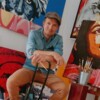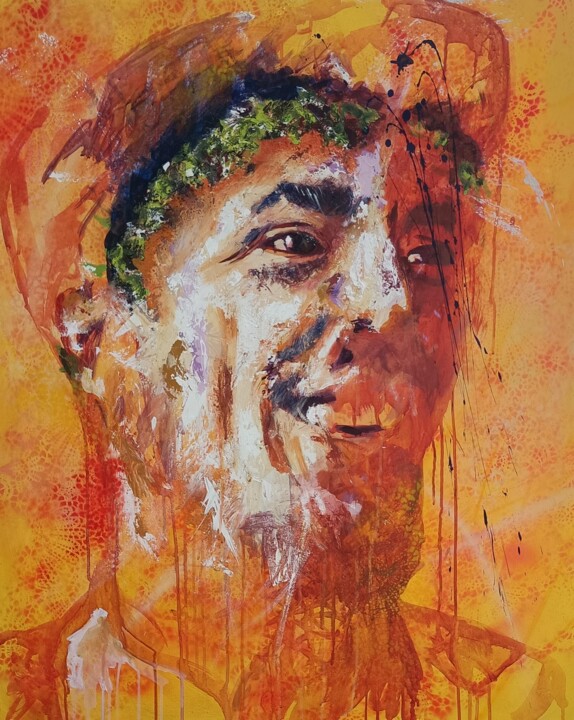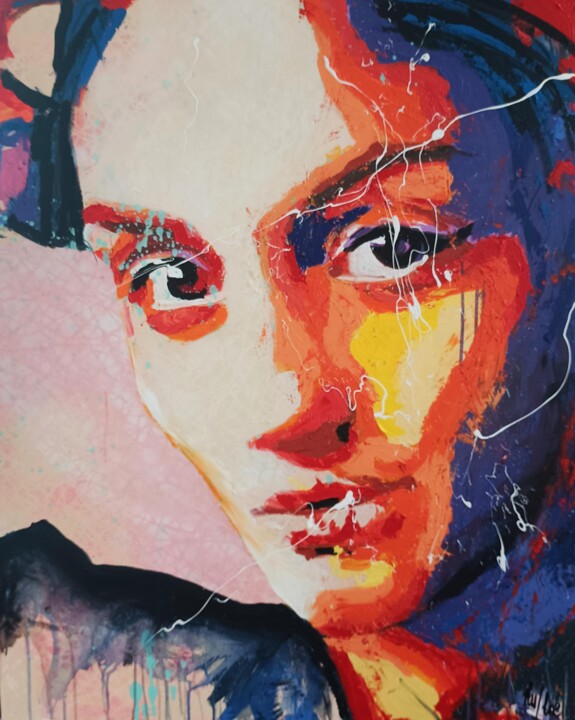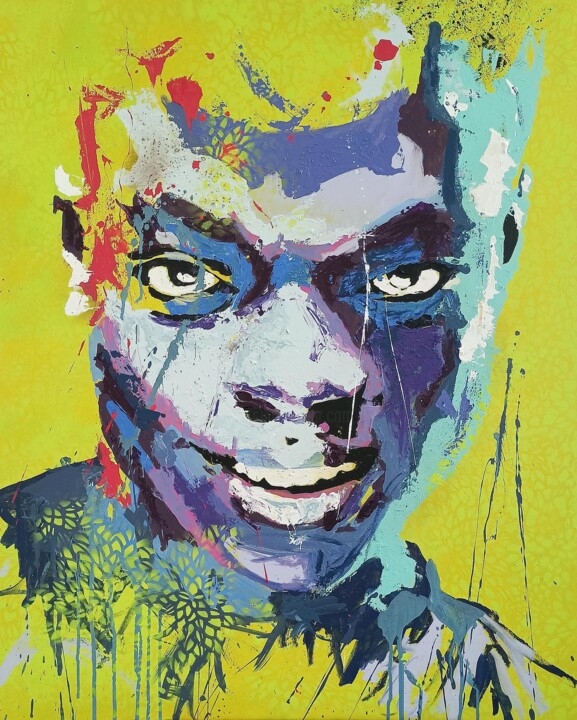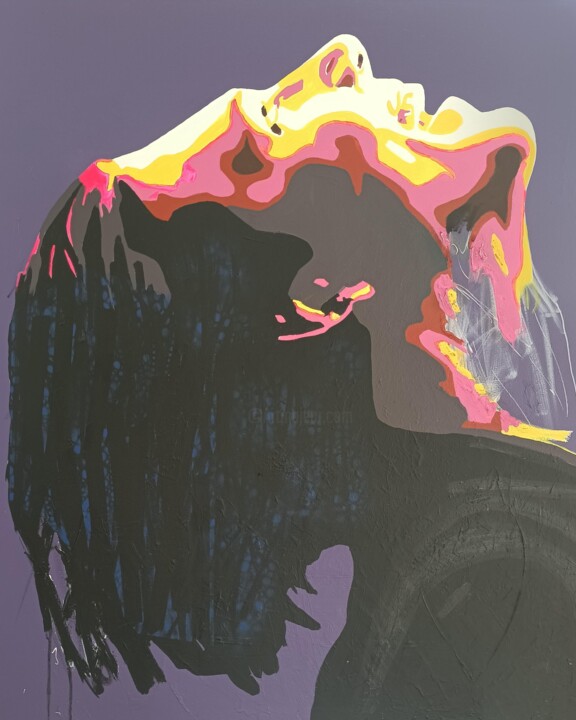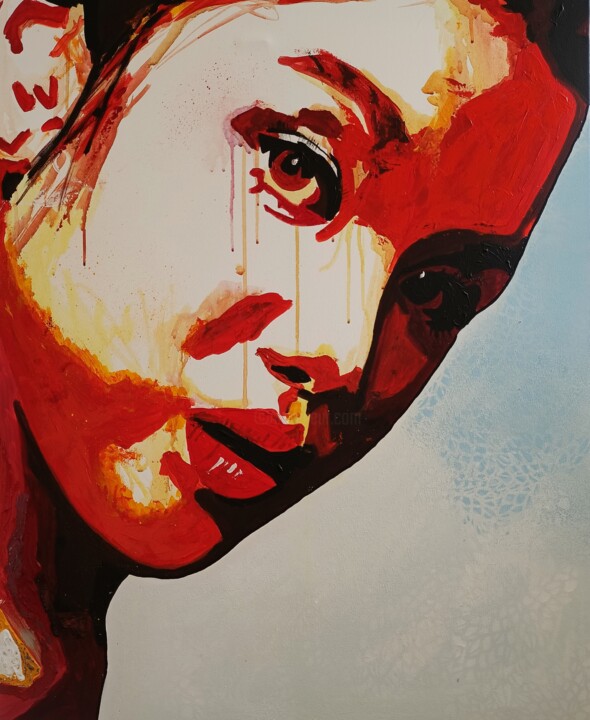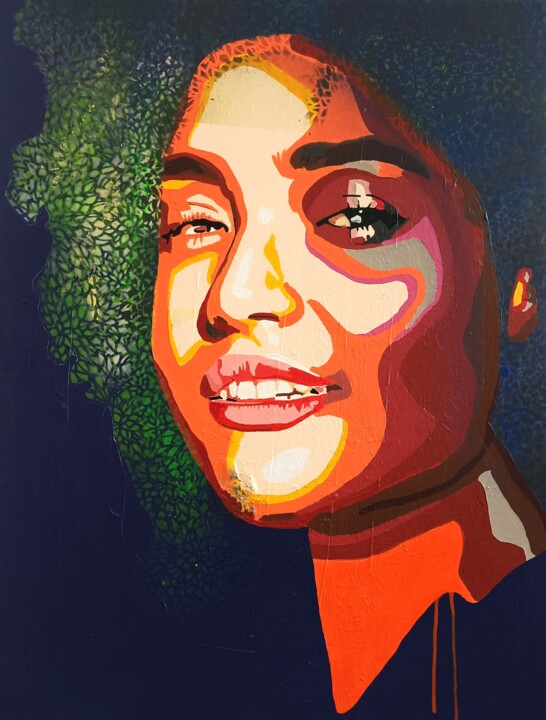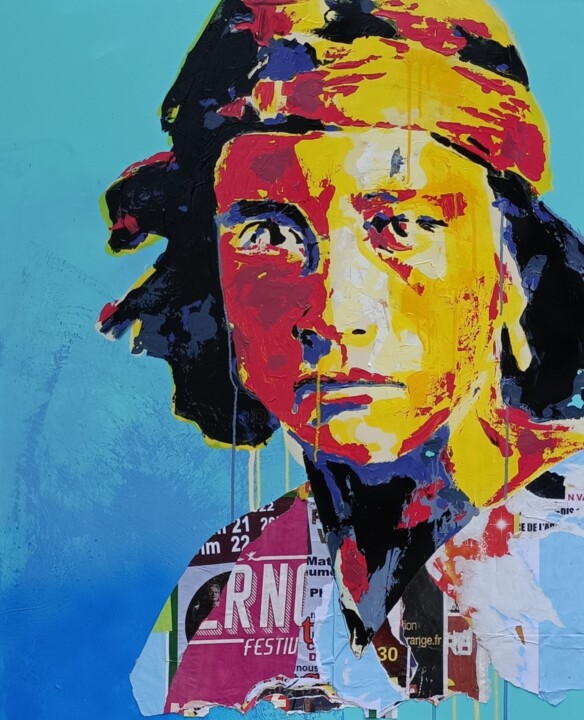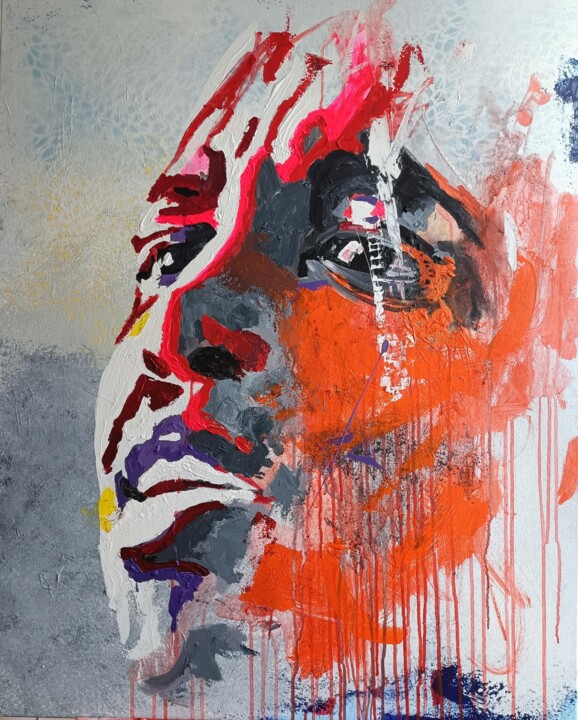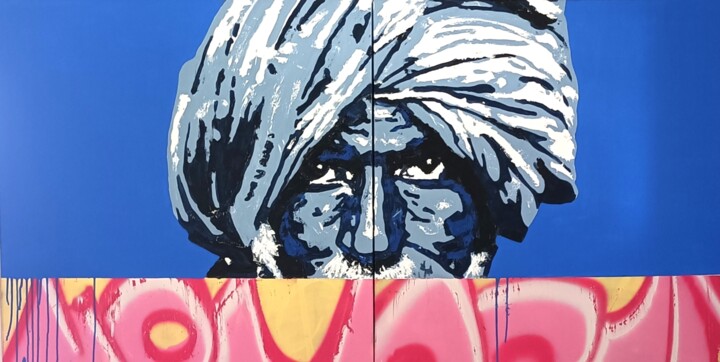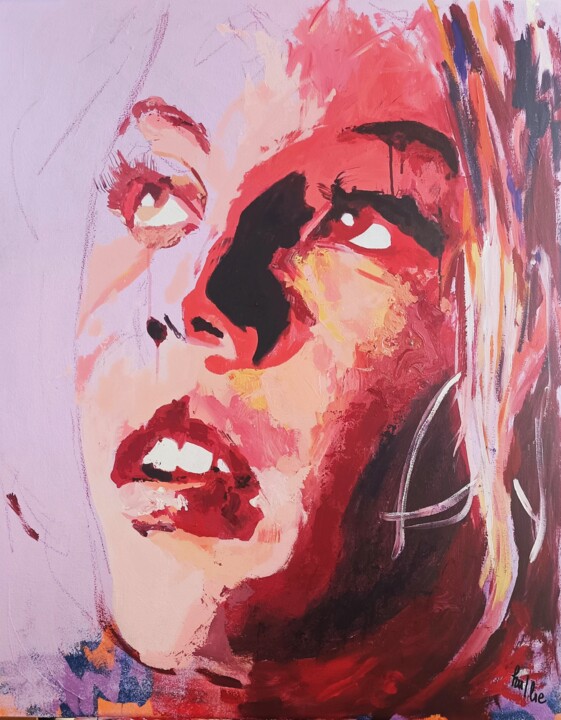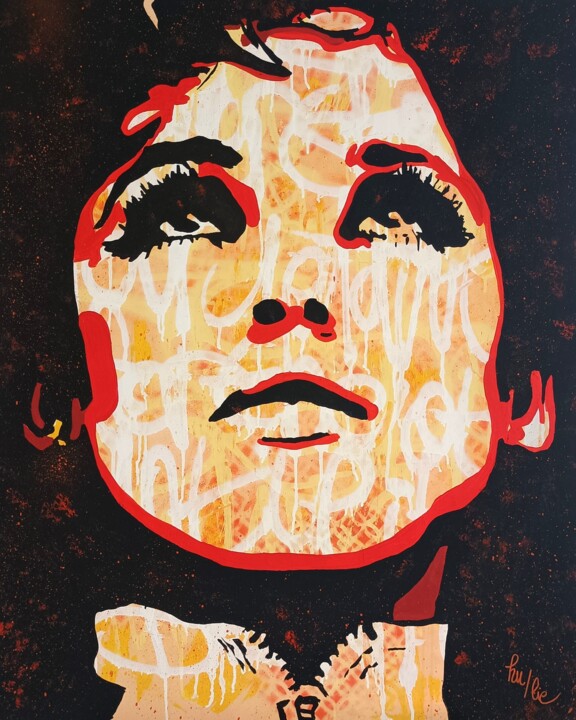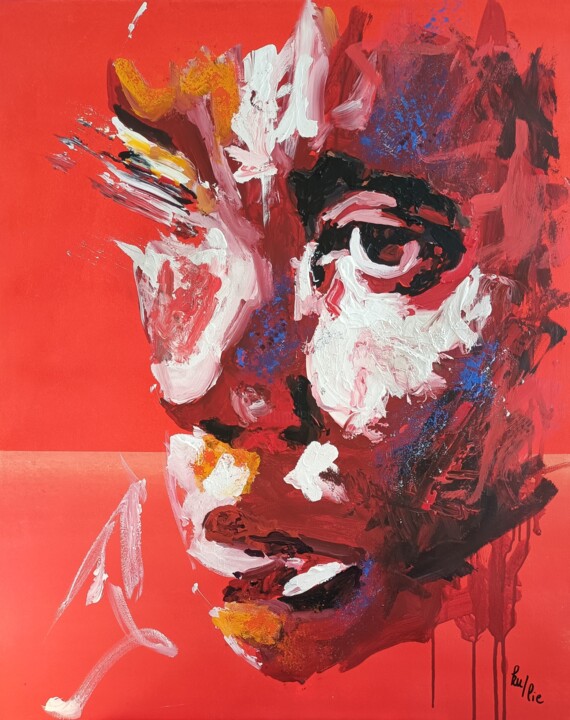What inspired you to create works of art and to become an artist? (events, feelings, experiences...)
As a teenager, in the 90s, I was completely fascinated by skate and hip-hop culture. I saw in it a lifestyle imbued with freedom, self-transcendence, transgression and creativity. I started graffiti to express my emotions, drawing inspiration from graffiti artists from Parisian and New York crews and more particularly from Lee Quinones.
My blase "Hu/Lie", a contraction of "Humanity is a lie", was born from this period and I kept it afterwards because it marks my artistic origins.
Gradually, I became interested in the history of art and the infinite diversity of creations including installations and happenings, which represented for me an inexhaustible source of expressiveness.
What is your artistic background, the techniques and subjects you have experimented with so far?
I joined the Faculty of Plastic Arts in Strasbourg where I was able to touch different mediums including painting and mechanical sculpture. It was very rich in lessons and it was from this period that I began to theorize my artistic practice and to invest myself fully in aesthetic and technical research.
I was very invested in the work of the material and more particularly in the wood and metal assembly that I declined in ephemeral installations in unusual outdoor places such as urban parks, markets, factories...
The subject of the use of humans in our world already predominated my creations, in particular our collective and individual inability to preserve nature. I invented hybrid trees whose metal trunks were covered with bark frozen in resin to denounce deforestation for the benefit of our individualistic comfort.
I then returned to painting because I needed to express feelings more spontaneously by manipulating matter and colors in disturbing compositions but always placing the human being at the heart of my thoughts.
What are the 3 aspects that differentiate you from other artists, making your work unique?
I don't create by looking for differentiation… I express myself by using art to make visible what I have buried deep within me. However, I define myself as a committed artist who wants to make the invisible visible, who defends just and essential causes such as ecology. Other artists also do that very well, but each in their own way and that's what makes us unique.
Where does your inspiration come from?
In general, I am inspired by the behavior of Man in his environment and his inconsistencies, which leads me to deal with subjects that are dear to me such as the fight against social injustice, discrimination, conservation of nature etc.
What is your artistic approach? What visions, sensations or feelings do you want to evoke in the viewer?
I seek to question the spectator on his own identity, his own actions by opposing 2 modes, that of excessive consumption (symbolized by the use of collages of torn posters or by encrusted graffiti) and that of survival, social or climatic.
I would like my paintings to act like a mirror in which everyone questions themselves through a game of gaze.
I specify that I do not want to place myself in the position of the fatalistic moralizer! Beyond the sometimes tragic observation, the hope of finding viable solutions must emerge. What actions am I ready to take to reduce inequalities? How do I behave in the face of poverty? What can I do to limit the degeneration of our ecosystem?... these are questions that I ask myself above all and my painting helps me to find answers, to change my own behavior.
If my creations also help to raise awareness, to shed light on social situations, to arouse doubt or empathy, to raise awareness of environmental issues, then I will have achieved my goal.
From introspection to expansion, this is how I conceive my plastic emancipation
What is the process of creating your works? Spontaneous or with a long preparatory process (technical, inspiration from art classics or other)?
I first have a long preparatory process in the sense that I carry out investigations around the subjects that I want to explore through my painting. For my series "Pursuit of dignity" where I stage women and men who have gone through incredible hardships, I will first study the different migratory movements, the reasons for exile, the stages of survival, the solutions provided, behaviors of solidarity or rejection.
I want to understand my subject and then start transforming my thoughts into plastic sketches. Sketches, color and composition tests and technical trials are an essential prerequisite for creation.
Then, facing the canvas, I go into a kind of meditation and I let myself be guided by the flows that cross me.
Do you use a particular working technique? if so, can you explain it?
My techniques vary according to my mood but especially according to the subject. I will favor painting with a knife for a hard look while I will use more the brush to draw fluid lines around a look filled with hope.
All my creations contain an element that evokes the consumer society, whether it's graffiti or the collage of posters that I tore down in the street.
Are there any innovative aspects in your work? Can you tell us which ones?
From a tools point of view, I use more and more recycled or eco-responsible materials. I think that we artists must also be part of the solutions and act as responsible. I also dedicate 5% of my income to donations to associations for the preservation of the ocean and its coastline.
Regarding my subjects, I use real facts to feed my creative process. My new series entitled “Human impact” evokes the consequences of human activity on the environment. The titles of my paintings are an integral part of the work and they refer to heat records set around the world. The goal is to strike people's consciences by stigmatizing topical phenomena that may seem isolated and inconsequential to us.
Do you have a format or medium that you are most comfortable with? if yes, why ?
I mainly paint on canvases of about 1m and mainly in portrait format because that is what best matches the faces and expressions I project in my paintings. Acrylic, ink, spray can, collage… I also like to mix techniques to convey certain messages.
Where do you produce your works? At home, in a shared workshop or in your own workshop? And in this space, how do you organize your creative work?
I am lucky to have a dedicated room in my house but I aspire to join a collective of artists with shared workshops to feed myself with the collective energy and get out of my frame.
Does your work lead you to travel to meet new collectors, for fairs or exhibitions? If so, what does it bring you?
I live each exchange with my viewers with real enthusiasm and a desire to learn more about each person's personal story, about their feelings about my creations. The look, the sensitivity, the experience of the spectator nourishes my work and that is why exhibitions, whatever they are and wherever they are, remain essential to my creative process.
How do you imagine the evolution of your work and your career as an artist in the future?
I don't have a long-term career plan because I try to enjoy the present moment as much as possible. I let myself be guided by my inspirations and my desires of the moment to move forward in this singular life.
I would soon like to dedicate myself to the design of several installation projects. It requires some logistics but I know it will soon be a reality. I look forward to reworking in 3 dimensions using different mediums like video, recycled objects but always with a social tone.
I would also like to develop collaborations with environmental associations so that we can mutually enrich each other and exchange with other artists to build collective exhibitions around common themes but always in a committed spirit.
What is the theme, style or technique of your latest artistic production?
The painting I am doing is called “Base Esperanza (AQ): 18°C”. It refers to the recent heat record set in Antarctica and which sounds like a warning message. To evoke this theme, I chose to paint an explorer whose gaze is imbued with 2 opposing feelings: determination and resignation. This face is articulated against a background of landscape with warm colors but evocative of an unprecedented climatic upheaval
Can you tell us about your most important exhibition experience?
Even if they are not yet planned, each upcoming exhibition will certainly be the most important!
However, my last exhibition around my series “Pursuit of dignity” was very significant because it symbolized the culmination of a long personal process and it was organized in the gallery of an association dedicated to the fight against discrimination. This formed a powerful, sensitive, militant whole.
If you could have created a famous work in the history of art, which one would you choose? And why ?
Without hesitation: Picasso's Guernica!
I would have liked to feel the creative power of Picasso when he painted this masterpiece.
The rage, the madness of the men, the incomprehension, the anger, the violence but also the size, the colors and the composition contribute to make this painting what I consider to be the ultimate work of committed denunciation.
If you could invite one famous artist (dead or alive) to dinner, who would it be? How would you suggest he spend the evening?
I would like to invite artists from the Fluxus movement, including Alison Knowles, Marina Abramovic, Nam June Paik, Ben and Georges Brecht, to discuss their vision of art today, those who rejected the very notion of a work of art and who advocated interdisciplinarity, art within everyone's reach and collective creation.
This would be done in the form of a nomadic picnic where we would stroll in the street, in contemporary art museums, performance halls, meetings of militant volunteers, bars... to end up in a shed with many objects and other instruments conducive to the creation of an ephemeral and collective work.

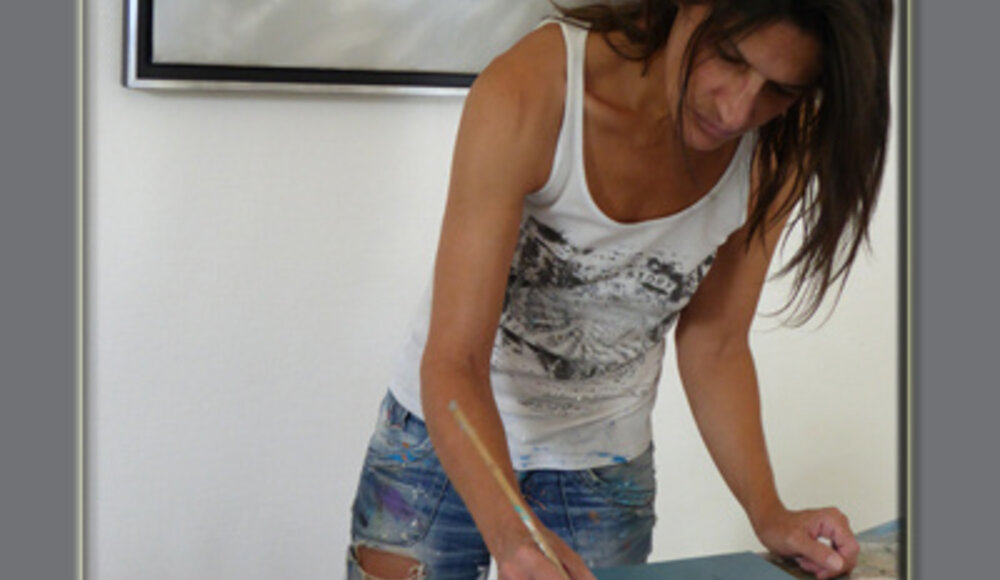






 Olimpia Gaia Martinelli
Olimpia Gaia Martinelli
